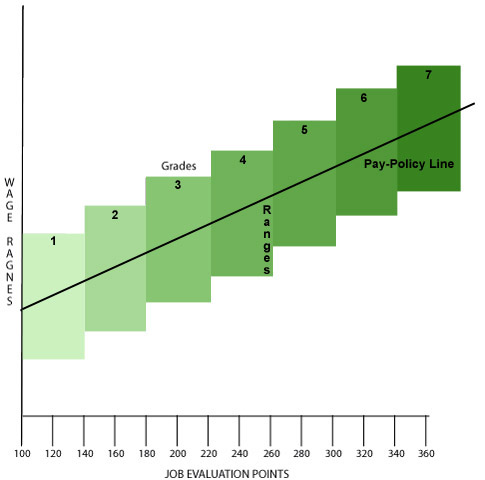
Memory Nguwi Job evaluation is the process of establishing the relative worth of positions within a certain organisation. This procedure is critical, and I do not see how an organisation can manage remuneration without a properly and formally designed grading system.
I am a firm believer that every organisation that employs a substantial number of people should have a formal job evaluation procedure in place. The problem is that job evaluation systems are frequently not implemented successfully for a variety of reasons.
While it is never explicitly stated, the ultimate purpose of job evaluation is to develop a compensation system that is equitable for all employees. To put it another way, a job evaluation process serves as a foundation for the development of an equitable system through which employees can be compensated. While we’re in charge of a job evaluation project, we witness this on a regular basis. Employees exaggerate their responsibilities in order to achieve higher grades. This results in distorted grades since managers who are supposed to be checking for this job misrepresentation rarely do so, leading to a distorted grading.
As a result, while job evaluation should ultimately result in the construction of an equitable pay structure for all employees, this does not imply that all employees will receive an a salary adjustment.
Pay structures are frameworks for determining the minimum salary, midpoint salary (competitive salary), and maximum salary for each grade in an organisation. This is frequently dictated by the organisation’s desired market positioning.
Some organisations may strive to pay at or near the median (50th percentile), while others with bigger pockets may aim to pay at or near the 75th percentile, or anything above. Whatever market stance an organisation chooses to take, it should be led by the requirement to guarantee that the wage bill is affordable and sustainable in both good and poor economic times, regardless of the industry.
In other words, what should the structure be of the transition from the job evaluation process to the pay structure? When the job evaluation process is completed, you should proceed to the pay structure.
Completed here signifies that the results have been provided to the management team as well as to all other members of the organisation. More crucially, it means that employees have been given the chance to file an appeal against the grade they have been assigned if they feel their role has been wrongly graded.
- Chamisa under fire over US$120K donation
- Mavhunga puts DeMbare into Chibuku quarterfinals
- Pension funds bet on Cabora Bassa oilfields
- Councils defy govt fire tender directive
Keep Reading
When the job evaluation is done correctly, the number of appeals is limited to a handful. Allowing employees to appeal job evaluation results encourages them to take responsibility for the outcomes.
Although it is crucial to highlight that the grounds for appeal should be clearly given out in the Terms of Reference for Appeals, this is not always the case. There must be compelling reasons to file an appeal. The most significant one is that the Grading Committee relied on insufficient information because the job description did not adequately describe the job.
Upon completion of the appeals process, you can move on to developing a pay structure. It’s important to remember that job evaluation will never be completely accepted by employees. This process will continue regardless of the outcome.
Processes such as creating a pay structure do not involve consultation with employees. This is a process that is frequently handled by a Consultant. In order to construct a new pay structure, it is necessary to apply mathematical formulas to internal and external data . The first step in this process is to determine whether there is a relationship between the job grade and the salary. According to the expectations, there will be a linear or exponential relationship between grade and internal pay.
On average, it is expected that the regression coefficient between grade and internal pay will be at least 80%.
The second stage is to gather information about your target market. This could entail comparing your pay to that of other organisations in your sector. Here’s a word of caution: be cautious when selecting your comparators.
The majority of people like to compare their organisation to other organisations in their sector. They can even compare themselves to similar organisations in terms of size, income, and headcount. Comparisons of this nature can be deceptive. When selecting comparators, it is important to first establish who your competitors are in the field of talent acquisition. It is pointless to establish a wage structure based on a market with which you have little or no competition for employees. Keep in mind that employees do not constantly quit and re-enter your industry.
It is possible to select the target market information that will serve as the anchor point for your pay structure after the market information has been reviewed.
It would be necessary to design a supporting policy to cover the job evaluation process as well as pay structure administration once the pay structure has been developed. If you don’t do this, the pay structure will get distorted very quickly, and you will be compelled to go through another job review procedure.
The pay structure administration policy should address all aspects of how you will manage the pay structure, including how you will pay employees.
This includes how you will treat new employees when they first begin working for your company.
Do they begin at the lowest salary possible in the grade , or are there any other considerations that may be required? It is against good pay administration practice to allow an employee to earn a salary that is higher or lower than their grade pay range.
- Nguwi is an occupational psychologist, data scientist, speaker and managing consultant at Industrial Psychology Consultants (Pvt) Ltd, a management and human resources consulting firm. — https://www.thehumancapitalhub.com or e-mail: [email protected].











